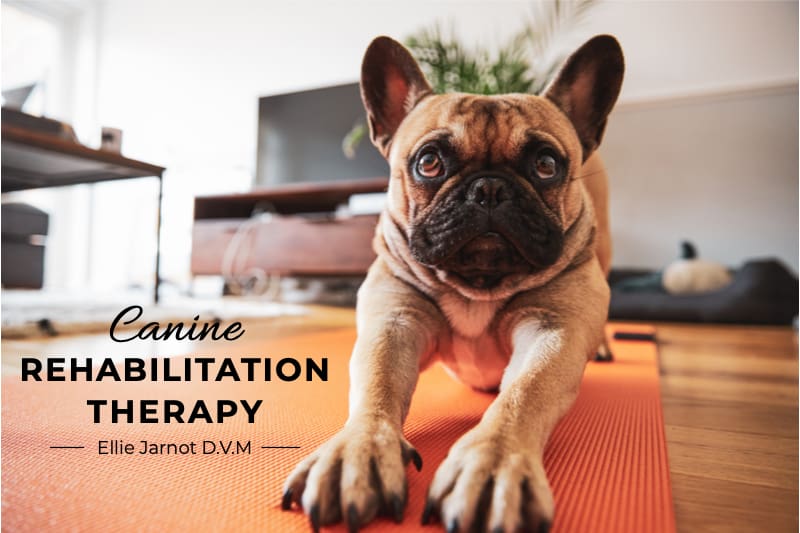At some point in their lives, most pets will end up having issues moving around. Whether it is caused by arthritis, orthopedic or neurologic injury, or obesity, it’s never an easy time for you or your pet. But what if we could do more than just give them pain pills and rest? What if we could see our older dogs moving around like they did when they were younger? Canine physical rehabilitation is an opportunity to do just that. We work to decrease pain, improve mobility, and restore function to the body.
One of the most common types of patients we see are older dogs who seem stiff after they’ve been sleeping, they may hesitate to join their people on the couch or in bed anymore, or maybe they just don’t want to play like they used to. Many times, this is attributed to them as “just getting older”. While age is certainly a contributing factor, there is usually a degree of pain or discomfort from underlying joint disease causing these behavior changes. Contrary to popular belief, dogs do not typically cry when they are in pain and we have to instead recognize more subtle changes in the way they move and use their body. A thorough exam by a veterinarian, sometimes with the help of x-ray images, can help to localize the problem area. A Certified Canine Rehabilitation Therapist helps better define not just the main problem but also other areas in the body that may be hurting from compensation, and then develop a treatment plan targeting these areas.
Additionally, even dogs who are young and otherwise healthy can suffer from joint disease that sometimes requires surgery. One of the most common orthopedic diseases seen at Animal Medical
Clinic is a torn cranial cruciate ligament in the knee. This is commonly treated with a surgical procedure known as a TTA (Tibial Tuberosity Advancement) or an extracapsular repair. After surgery, dogs undergo an extensive recovery process before they regain function of their leg, and many times the leg is never “normal” again. Much like in human PT, canine physical rehabilitation therapy aims to provide a faster return to function and better long-term health of the leg. Specifically, post-operative therapy involves using gentle exercises to encourage weight-bearing, keep the joint in motion, and rebuild or stretch muscles to promote a healthy joint.
Other diseases that could benefit from physical rehabilitation include orthopedic disease such as hip dysplasia or elbow dysplasia, neurologic conditions such as intervertebral disc disease (IVDD) or fibrocartilaginous embolism, and soft tissue injuries such as those seen in agility and sporting dogs. Dogs struggling to lose weight can also benefit from a weight loss plan put together by a rehabilitation therapist.
We are fortunate at AMC to have a Certified Canine Rehabilitation Therapist on our staff: Dr. Ellie Jarnot. If your pet is a candidate for physical rehabilitation, Dr. Ellie will start with a one-hour-long consultation. She will help identify areas of pain, weakness, decreased range of motion, or lack of flexibility. She will use different massage and stretching techniques to bring immediate relief to these areas and complete a series of exercises in the clinic to help challenge your pet and assess their level of function. At the end of the appointment, she will teach you how to help your pet at home with a customized Home Exercise Plan (HEP). You will be expected to dedicate time every day to this prescribed therapy in order to help your pet meet their goals for mobility and function. Depending on your pets’ individual case and progress, you will have follow-up appointments twice weekly, weekly, or every other week to continue with manual therapy and a therapeutic exercise plan.
If you would like to see if physical rehabilitation would help your dog, please give us a call and schedule a rehabilitation services consultation with Dr. Ellie.
